Dates of operation 1982–1997 Founded 1984 | ||
 | ||
Ideology Marxism–LeninismSocialismGuevarismPeruvian nationalismAnti-imperialism Leaders Néstor Cerpa Cartolini, Víctor Polay (captured) | ||
Tupac amaru fc trocha pura campeon de campeones rey de la sabana
The Túpac Amaru Revolutionary Movement (Spanish: Movimiento Revolucionario Túpac Amaru, abbreviated MRTA) was a Peruvian radical group which started in the early 1980s. The group was led by Víctor Polay Campos until he was sentenced to 32 years imprisonment in 1992 and by Néstor Cerpa Cartolini ("Comrade Evaristo") until his death in 1997.
Contents
- Tupac amaru fc trocha pura campeon de campeones rey de la sabana
- Origins
- Operations
- Trials and convictions
- Truth and Reconciliation Commission
- References

The MRTA took its name in homage to Túpac Amaru II, an 18th-century rebel leader who was himself named after his ancestor Túpac Amaru, the last indigenous leader of the Inca people. MRTA was designated a terrorist organization by the Peruvian government, the US Department of State and the European Parliament but was later removed from the United States State Department list of Foreign Terrorist Organizations on October 8, 2001.

At the height of its strength, the movement had several hundred active members. Its stated goals were to establish a socialist state and rid the country of all imperialist elements.
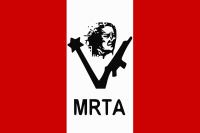
Origins
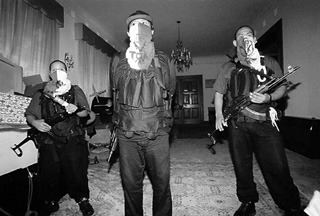
The MRTA originated in 1980 from the merging of the Marxist-Leninist Revolutionary Socialist Party and the militant faction of the Revolutionary Left Movement, MIR El Militante (MIR-EM). The former gathered several ex-members of the Peruvian armed forces that participated in the leftist dictatorial government of Juan Velasco Alvarado (1968-1975), and the latter represented a subdivision of the Revolutionary Left Movement, a Castroist guerrilla faction which was defeated in 1965. The MRTA attempted to ally with other leftist organizations following the first democratic elections in Peru after a military government period (1968–1980).
Operations
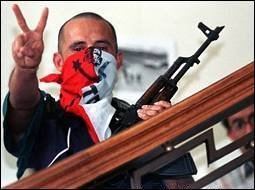
The first action by the MRTA occurred on 31 May 1982, when five of its members, including Victor Polay Campos and Jorge Talledo Feria (members of the Central Committee) robbed a bank in La Victoria, Lima. During the hold up, Talledo was killed by friendly fire and became the first loss of the movement.

On 31 May 1989, a group of six guerrillas shot dead eight transvestites and homosexuals in a bar in the city of Tarapoto. The weekly "Cambio", official organ of the MRTA, claimed responsibility, accusing the police of protecting "these social ills, which were used to corrupt youth." This was reported by the Truth and Reconciliation Commission (TRC) in its final report (August 28, 2003). The date has been considered by the Peruvian LGBT movement as a historical landmark.
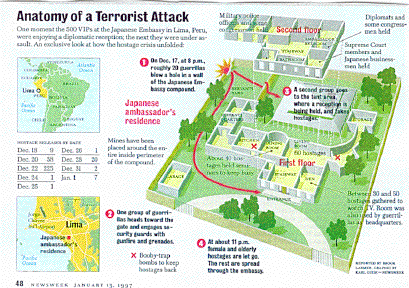
Peru's counterterrorist program diminished the group's ability to carry out terrorist attacks, and the MRTA suffered from infighting as well as violent clashes with Maoist rival Shining Path, the imprisonment or deaths of senior leaders, and loss of leftist support. ln 2001, several MRTA members remained imprisoned in Bolivia.
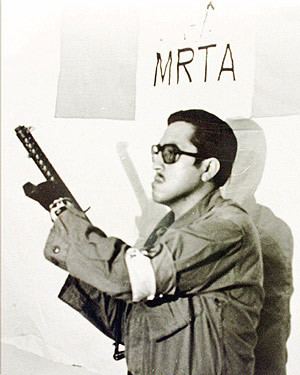
On 6 July 1992, MRTA fighters staged a raid on the town of Jaen, Peru, a jungle town located in the northern department of Cajamarca. One policeman, Eladio Garcia Tello, responded to the calls for help. After an intense shootout, the guerrillas were driven out of the town. Eladio Garcia perished in the firefight.
Its last major action resulted in the 1997 Japanese embassy hostage crisis. In December 1996, 14 MRTA members occupied the Japanese Ambassador's residence in Lima, holding 72 hostages for more than four months. Under orders from then-President Alberto Fujimori, armed forces stormed the residence in April 1997, rescuing all but one of the remaining hostages and killing all 14 MRTA militants. Fujimori was publicly acclaimed for the decisive action, but the affair was later tainted by subsequent revelations that at least three, and perhaps as many as eight, of the MRTistas were summarily executed after they surrendered.
Trials and convictions
In a case that attracted international attention, Lori Berenson, a former MIT student and U.S. socialist activist living in Lima, was arrested on 30 November 1995, by the police and accused of collaborating with the MRTA. She was subsequently sentenced by a military court to life imprisonment (later reduced to 20 years by a civilian court).
In September 2003, four Chilean defendants were retried and convicted of membership in the Túpac Amaru Revolutionary Movement and participation in an attack on the Peru–North American Cultural Institute and a kidnapping-murder in 1993.
On 22 March 2006, Víctor Polay, the guerrilla leader of the MRTA, was found guilty by a Peruvian court on nearly 30 crimes committed during the late 1980s and early 1990s.
Truth and Reconciliation Commission
Peru's Truth and Reconciliation Commission determined that the group was responsible for 1.5% of the deaths investigated. In its final findings published in 2003, the Commission observed:
Unlike Shining Path, and like other armed Latin American organizations with which it maintained ties, the MRTA claimed responsibility for its actions, its members used uniforms or other identifiers to differentiate themselves from the civilian population, it abstained from attacking the unarmed population and at some points showed signs of being open to peace negotiations. Nevertheless, MRTA also engaged in criminal acts; it resorted to assassinations, such as in the case of General Enrique López Albújar, the taking of hostages and the systematic practice of kidnapping, all crimes that violate not only personal liberty but the international humanitarian law that the MRTA claimed to respect.